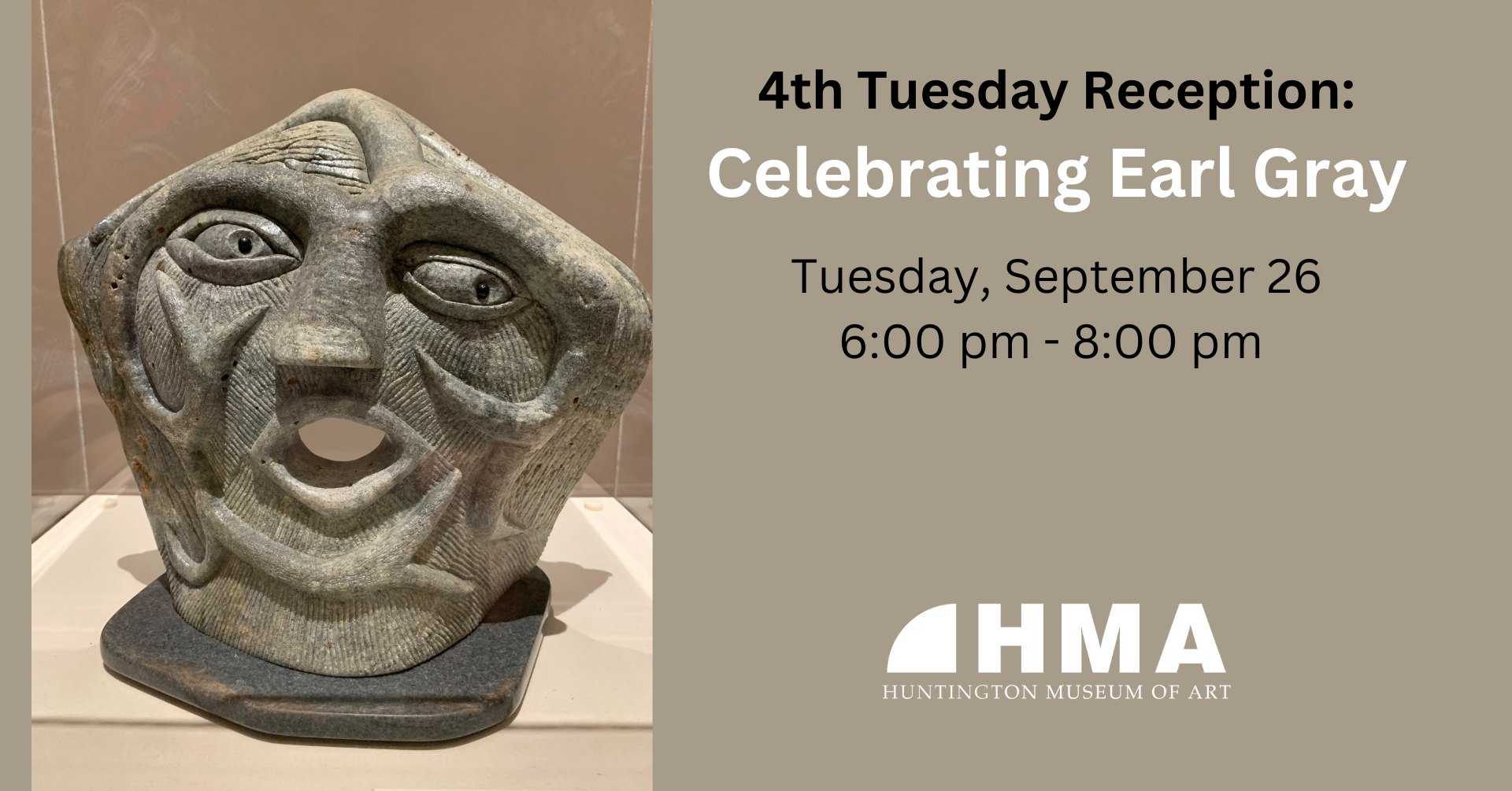The Earl Gray: Hand-Carved Stones exhibit, which continues through Oct. 22, 2023, will be in the spotlight during the free Tuesday Tour Series event on Sept. 26 from 6 to 8 p.m. at the Huntington Museum of Art. Refreshments will be served.
When this exhibit opened on July 29, it joined two other folk art exhibits at HMA – Folk Art: Eclectic Expressions from the Collection on display through Sept. 24 and Minnie Adkins: Story Carvings on view through Nov. 5.
The Huntington Museum of Art’s relationship with Earl Gray spans decades. Early in his artistic career, his work was championed by former curator Eason Eige, and the Museum has enthusiastically embraced him ever since. He is represented in the Museum’s folk art collection by more than a dozen works. In 2005, he was commissioned to create a series of seven relief carvings in the natural rock found along the Museum’s nature trails, and an additional relief carving was added after the Teubert Foundation Sensory Trail was constructed.
“Earl Gray is a beloved local folk artist, who was born in Sistersville, West Virginia, in 1955,” said John Farley, HMA Senior Curator / Exhibition Designer. “One of ten children, Earl grew up working a farm on Spurlock Creek in northern Cabell County. From a young age, he had a knack for farming, house painting, and carpentry. On a particular day in the early 1980s, while working on a local tobacco farm with his brothers, he passed the time by whittling a stick with his pocketknife. As the slivers of wood fell away and the contours of a face emerged, he discovered a love of carving.”
In 1983, Earl Gray and his wife, Barbara, moved to a farm on Spurlock Creek, not far from where he spent his childhood. There, to this day, they maintain a home and studio, nestled in a close-knit, rural community, and surrounded by trees. In the mid-1990s, while searching for firewood, a large stone caught his attention. Inspired, he moved the stone to his studio and began carving with a hammer and chisels.
“This serendipitous encounter led to years of hard work carving hundreds of stones by hand,” Farley said. “Earl does not sketch his ideas in advance; he envisions the imagery hidden within the material and carves until it is revealed. The Grays have traveled to California, Vermont, Utah, New Mexico, Arkansas, North and South Carolina, Tennessee and Virginia to collect stones for carving. Earl has carved alabaster, American and Brazilian soapstone, marble, and muscovite, among other types of stone. The sandstone he carves is found locally.”
This exhibit is presented with support from the City of Huntington Mayor’s Council for the Arts.
This exhibit is presented with support from The Isabelle Gwynn and Robert Daine Exhibition Endowment.
This program is presented with financial assistance from the West Virginia Department of Arts, Culture & History, and the National Endowment for the Arts, with approval from the West Virginia Commission on the Arts.
For more information on exhibits and events at HMA, visit hmoa.org or call (304) 529-2701. HMA is fully accessible.
**Press release from Huntington Museum of Art.

